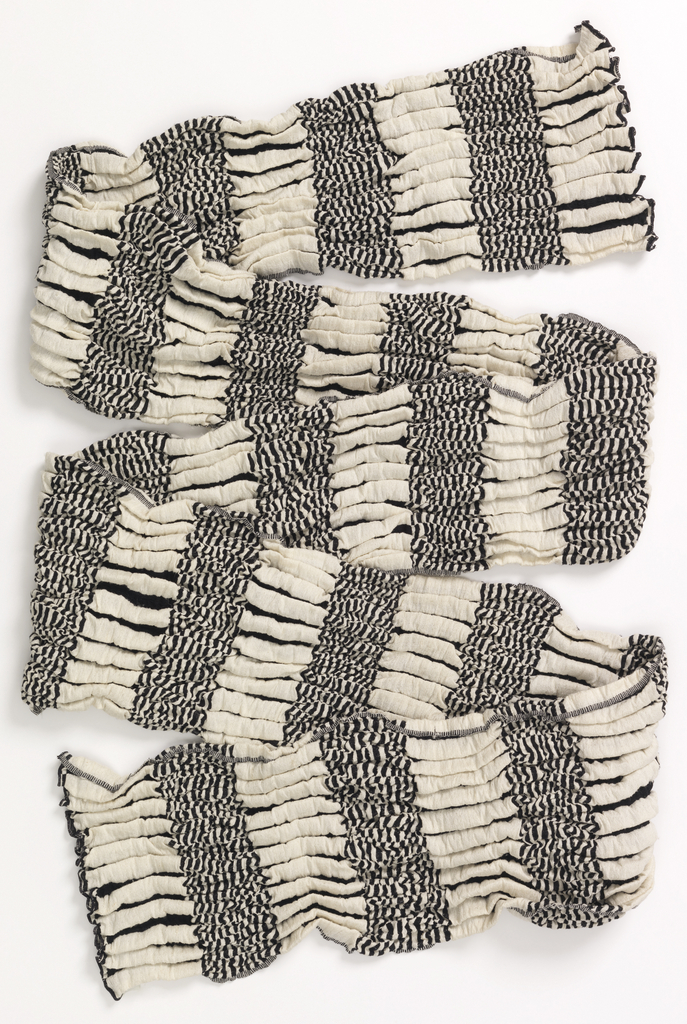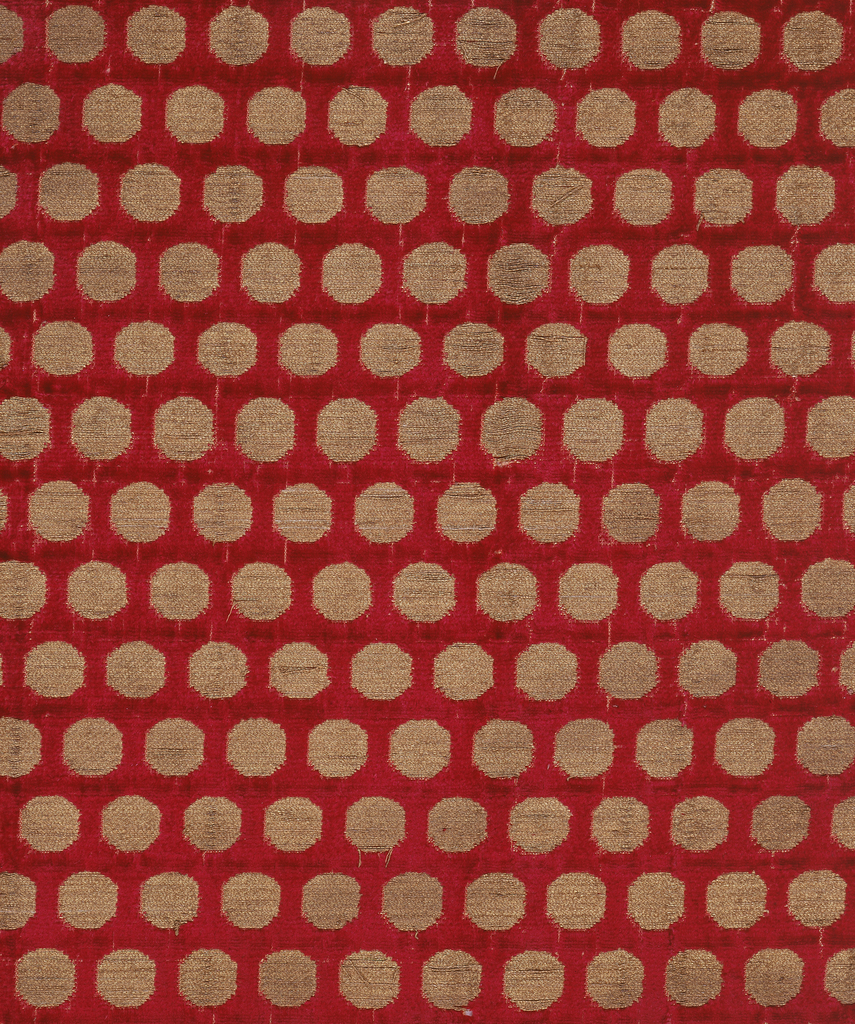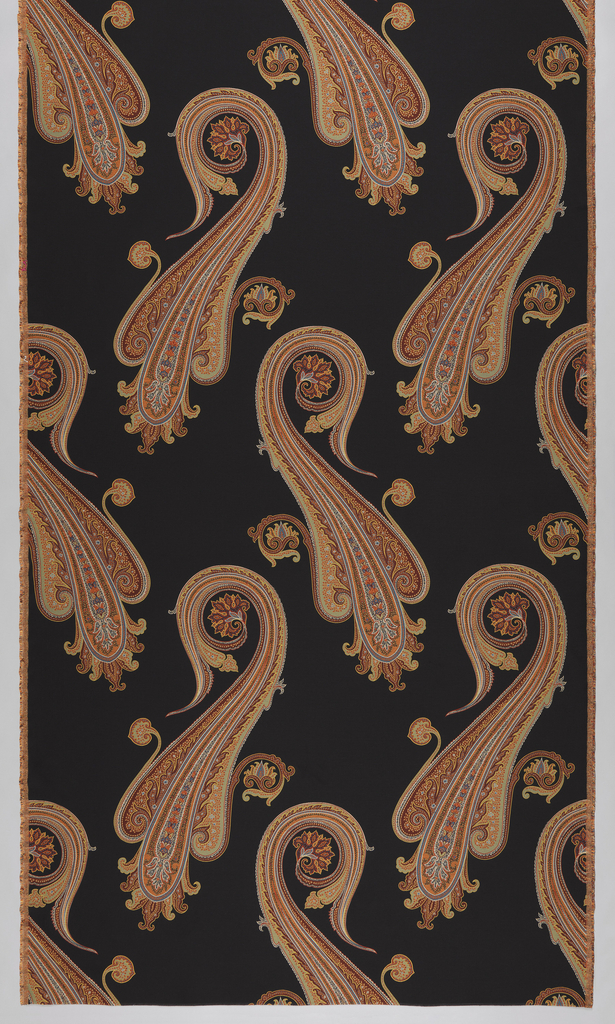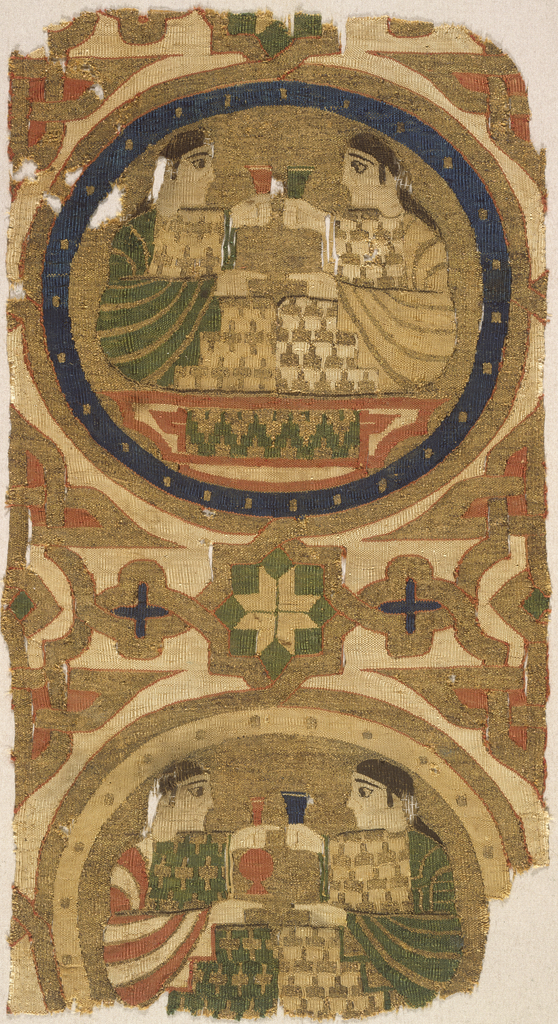Color was a central element in all of Verner Panton’s designs for interiors and furniture, and in particular, textiles, which became his most important vehicle for color in the futurist environments for which he is best known. Born in Denmark, Panton lived and worked most of his life in Basel, Switzerland, where by the mid-1950s...
Resourcefulness has been a key component of Japanese life for centuries, and in design, one sees this most dramatically with materials and objects being repurposed, recycled, or reused. The Japanese textile company, Nuno, founded in 1984, is constantly striving to integrate this ecological approach while continuing to create some of the most technologically innovative and...
This sumptuous red velvet with gold disks embodies what we can learn from textiles by looking, comparing, deconstructing, reconstructing, and then interpreting our observations. Milton Sonday, my predecessor in the Textiles department at the Cooper-Hewitt, is a master of this methodology and has spent years employing it and teaching it to researchers and curators around...
Japanese textile designer, Junichi Arai (b.1932), said that the crucial problem for contemporary textile makers is choosing and blending the myriad of available materials, tools, and technologies. He explains that history should be the maker’s guide, as there have been passionate efforts dedicated to making better fibers, textiles, and garments. Arai has lived by this...
Make a fist. Pound your hand. Chances are, this was how the paisley pattern started—according to Indian textile designer Umang Hutheesing, who happens to know a lot about the history of Indian textiles. On a recent visit to New York City, I asked Hutheesing for his opinion on the derivation of the paisley pattern. The...
Admirers of this exquisite tapestry fragment woven in medieval Spain fondly refer to it as “the Drinking Ladies”—an apt description for the two pairs of beautifully-robed women who lift their cups and bottle in salutation. The Drinking Ladies communicates the pleasures of female companionship amid the sumptuous environment of the wealthier classes. This was the...





